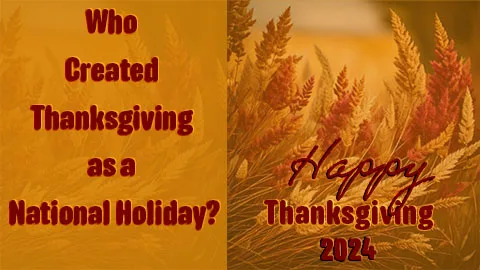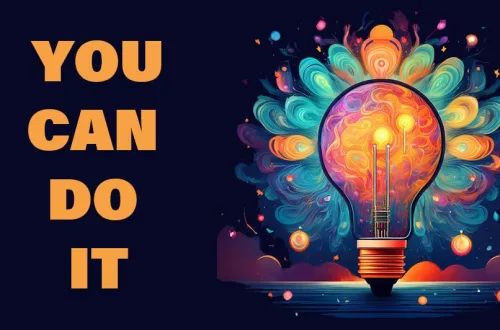
Thanksgiving 2024: A Time to Feast on Gratitude, Not Just Food
Thanksgiving is just around the corner—a moment to collectively pause and reflect. In a world that often feels like it’s moving at lightning speed, Thanksgiving offers a gentle reminder to slow down, savor the present, and appreciate the good—whether it’s life’s grand milestones or the small, quiet blessings we often overlook.
Thanksgiving 2024
Thanksgiving Day in the United States is a national holiday celebrated on the fourth Thursday of November each year. In 2024, it will be observed on November 28th. It is a cherished time for giving thanks, spending time with family and friends, and enjoying a festive meal. The traditional spread often includes turkey, stuffing, mashed potatoes, cranberry sauce, and, of course, pumpkin pie. But Thanksgiving isn’t just about what’s on the table; it’s about who’s around it and the spirit of gratitude that binds us together.
Why Was Thanksgiving Created?
Thanksgiving was created and promoted as a way to:
- Give thanks for the blessings of the harvest and the past year.
- Promote unity and healing, particularly during times of national crisis like the Civil War.
- Celebrate the values of family, gratitude, and community.
Modern Thanksgiving
Over time, Thanksgiving has evolved into a largely secular holiday. It is marked by:
- Family Gatherings: Loved ones come together to share a meal.
- Parades: The Macy’s Thanksgiving Day Parade in New York City is a famous annual event.
- Football: Watching and playing football games is a popular tradition.
- Charity: Many people volunteer or donate to help those in need.
Who Created Thanksgiving as a National Holiday?
- Sarah Josepha Hale’s Campaign:
Thanksgiving became a national holiday largely thanks to the efforts of Sarah Josepha Hale, a magazine editor, writer, and advocate. She spent decades lobbying presidents and publishing articles urging the creation of a national Thanksgiving Day. She believed it would help unite the country, especially in the years leading up to the Civil War. - President Abraham Lincoln:
In 1863, during the Civil War, President Abraham Lincoln proclaimed Thanksgiving a national holiday, to be celebrated on the last Thursday of November. He issued this proclamation partly as a way to foster unity and gratitude amid the nation’s hardships.
Origins of Thanksgiving
Colonial Practices:
Thanksgiving-like feasts were not unique to Plymouth. Harvest celebrations and days of thanks for blessings, such as survival or successful harvests, were common in many European and Native American cultures.
Pilgrims and the 1621 Feast:
The tradition is often traced back to the Pilgrims who arrived on the Mayflower in 1620 and settled in Plymouth, Massachusetts. After enduring a harsh winter in which many settlers died, the Pilgrims enjoyed a successful harvest in 1621 with the help of Native Americans, particularly the Wampanoag tribe and their leader Massasoit. To celebrate, the Pilgrims held a three-day feast with the Wampanoag as guests. This is often considered the “First Thanksgiving,” though it wasn’t called that at the time.
The Deeper Meaning Behind Thanksgiving
In reality, Thanksgiving is much more than indulging in delicious food or watching the big game on TV. It’s a moment to pause and reflect on the things that truly matter—our relationships, the opportunities we’ve been given, and even the lessons from challenges we’ve faced. It’s a yearly reminder to express our thanks not just toward family but also for everything we have, no matter how big or small.
Imagine sitting around the dinner table, the hum of conversations filling the room. Someone raises their glass and shares what they’re grateful for—a new job, good health, the people who’ve stood by them. It’s a simple act, but one that brings warmth and connection. This is the essence of Thanksgiving, and it’s a practice we could all benefit from carrying into our daily lives.
The Science of Gratitude: Why It Matters
Gratitude isn’t just a warm and fuzzy feeling; it’s a scientifically backed tool for improving mental health and overall well-being. According to positive psychology research, practicing gratitude can:
- Increase Happiness: Acknowledging the good in your life can lead to higher levels of joy and satisfaction.
- Strengthen Relationships: Expressing gratitude to others fosters deeper connections and builds trust.
- Reduce Stress: Gratitude shifts your focus away from what you lack, helping you approach life with a more positive outlook.
- Improve Physical Health: Studies have shown that grateful individuals sleep better, have stronger immune systems, and experience less chronic pain.
But let’s take it a step further—gratitude also has a significant impact on burnout.
Gratitude as a Balm for Burnout
Burnout, often caused by chronic stress and emotional exhaustion, leaves people feeling depleted and detached. It’s easy to fall into a cycle of focusing on what’s going wrong: tight deadlines, long work hours, or strained relationships. Gratitude offers a way to break free from this loop.
Here’s how it works:
- Shifting Perspective: Burnout narrows our attention to stressors, but gratitude helps us zoom out, highlighting what’s still positive. This shift can foster hope and reduce the overwhelm.
- Restoring Energy: Gratitude encourages us to savor small joys—like a kind word from a colleague or a quiet moment of coffee before the day begins—helping to replenish emotional reserves.
- Rekindling Purpose: Feeling thankful for the opportunities, skills, or support systems in your life can reignite a sense of meaning, even amidst challenges.
Practical Gratitude Tips
- Daily Gratitude Check-ins: Before bed or during a break, take a moment to identify three things you’re thankful for. They can be as simple as a cool breeze or a smile from a coworker.
- Gratitude Breaks at Work: Pause during a stressful day to write a quick thank-you note to someone who’s helped you. This small act can uplift both of you.
- Reframe Stressors: For example, instead of dreading a busy week, focus on being grateful for the trust others have in your abilities.
- Gratitude Journaling with a Twist: When feeling burned out, write not just what you’re thankful for but also why these things matter to you. This deeper reflection can reignite positive emotions.
- Lean on Social Gratitude: Share moments of thankfulness with friends or colleagues. A simple “I really appreciated your help with that task” fosters connection and mutual support.
- Reframe Challenges Gratitude doesn’t mean ignoring difficulties—it means finding the silver linings. When faced with a tough situation, ask yourself, “What can I learn from this?” or “What strengths am I developing through this experience?”
Example: After losing a job, Alex focused on the chance to pivot to a career that aligned better with his passions.
Gratitude and Thanksgiving: A Tradition Worth Living Daily
Thanksgiving comes once a year, but the spirit of gratitude can transform your life if practiced daily. It’s not about denying life’s hardships but about recognizing the beauty and blessings that coexist with them. When we make gratitude a habit, we shift from scarcity to abundance, from frustration to contentment, and from isolation to connection.
This Thanksgiving, take a moment to truly feel the gratitude in your heart—for your family, your friends, and even the little things like the crisp autumn air or the cozy warmth of home. And remember, the real power of gratitude lies in its ability to turn ordinary moments into extraordinary ones.
Have a Happy Thanksgiving, and thank you for reading!




